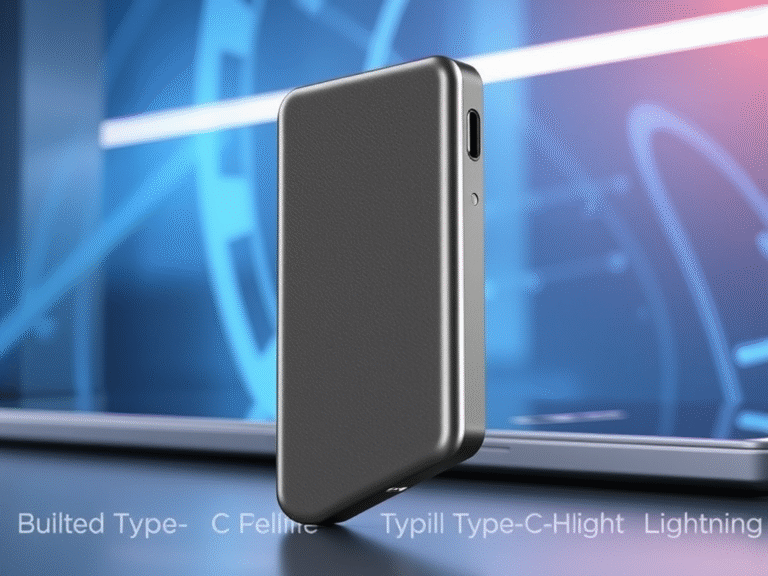Top Benefits of SPC Vinyl Flooring Explained
SPC vinyl flooring is a popular choice due to its durability, affordability, and realistic aesthetics, mimicking wood and tile. It features excellent water resistance, easy installation, and low maintenance, making it suitable for both residential and commercial spaces. This comprehensive guide covers its benefits, installation, maintenance, and buying considerations.
SPC Vinyl Flooring: The Complete Guide to Choosing, Installing, and Maintaining Rigid Core Luxury Floors
Quick Summary
SPC vinyl flooring has quickly become one of the most popular choices for homeowners and business owners seeking a durable, affordable, and visually stunning flooring option. Combining the strength of stone with the flexibility of vinyl, SPC offers exceptional water resistance, easy installation, and realistic designs that effortlessly mimic hardwood and tile. Whether you’re renovating a single room or outfitting an entire commercial space, understanding the ins and outs of SPC flooring can help you make a confident, informed decision.
In this comprehensive guide, we will cover everything you need to know about SPC vinyl flooring. From the benefits and installation process to top brands and maintenance tips, every section of this review is crafted to empower you with valuable insights. Whether you’re a DIY enthusiast, a homeowner planning your next upgrade, or a business professional seeking a reliable flooring solution, this article will equip you with all the essential knowledge.
Table of Contents
What is SPC Vinyl Flooring?
SPC vinyl flooring, also known as Stone Plastic Composite flooring, is revolutionizing modern flooring with its incredible blend of resilience, beauty, and practicality. Crafted from a combination of natural limestone powder, polyvinyl chloride, and stabilizers, SPC floors feature a rigid core that provides unmatched durability and waterproof performance.
Unlike traditional vinyl or laminate options, SPC flooring is engineered to withstand extreme conditions without losing its integrity. Its multi-layered structure includes a wear layer, a vinyl top layer with a printed design, the rigid core layer, and a backing layer. Each component plays a vital role in making SPC floors a smart, stylish investment for any environment.
In today’s market, SPC vinyl flooring is not just a trend; it’s a long-term solution that meets the growing demands for resilient, low-maintenance, and visually appealing floor surfaces.
Key Features and Benefits of SPC Flooring
SPC vinyl stands out due to its impressive feature set when evaluating flooring choices. Let’s explore the advantages it brings to your spaces.
Waterproof Capabilities
Water is often the enemy of traditional flooring materials. However, SPC’s dense, stone-based core offers 100% waterproof performance. You can install it in kitchens, bathrooms, and basements without worrying about swelling or warping.
Exceptional Durability
Durability is a top priority if you live in a busy household or manage a commercial space. SPC flooring resists scratches, dents, and stains, holding up impressively against the wear and tear of daily life.
Dimensional Stability
Thanks to its stone composite core, SPC floors do not expand or contract significantly with changes in humidity or temperature. This stability makes it ideal for areas with fluctuating climate conditions.
Effortless Installation
SPC flooring is known for its click-lock installation systems, allowing even non-professionals to lay it down quickly. Floating installation methods eliminate the need for adhesives, saving time and cost.
Realistic Visuals
Modern printing technology enables SPC floors to convincingly replicate the look and feel of wood, marble, and concrete, offering sophisticated aesthetics at a fraction of the cost.
Low Maintenance
Keeping your SPC floor in top condition is easy. A quick sweep and occasional damp mop will maintain its luster without the need for waxing or polishing.
SPC Flooring vs Other Flooring Types
Choosing the right flooring often means comparing alternatives carefully. Here’s how SPC flooring measures up against popular choices.
SPC vs WPC (Wood Plastic Composite) Flooring
Although both are waterproof and visually similar, SPC’s stone core makes it denser and more rigid compared to the softer, more cushioned feel of WPC. If stability and toughness are your priorities, SPC is the better choice.
SPC vs Laminate Flooring
While laminate is affordable and attractive, it struggles with water resistance. SPC flooring triumphs with full waterproofing and better scratch resistance, making it suitable for moisture-prone areas where laminate would fail.
SPC vs Traditional Hardwood
Hardwood offers unmatched natural beauty but demands high maintenance and comes with a hefty price tag. SPC flooring captures the look of hardwood without the vulnerability to moisture, scratches, or cost burden.
Where and How to Use SPC Vinyl Flooring
Versatility is one of SPC vinyl flooring’s greatest strengths. It adapts seamlessly across various settings.
Residential Spaces
Whether you’re upgrading your kitchen, revamping a bathroom, or finishing a basement, SPC flooring stands up to moisture and wear, providing a stylish yet resilient surface.
Commercial Applications
Office spaces, retail environments, restaurants, and even healthcare facilities can benefit from SPC flooring’s robust construction. It handles high foot traffic with ease while maintaining its visual appeal.
Outdoor and Semi-Outdoor Areas
Although SPC flooring is tough, full exposure to the elements may impact its longevity. However, semi-enclosed spaces like patios or sunrooms can still enjoy the benefits of SPC, provided direct sunlight and standing water are minimized.
How to Choose the Right SPC Flooring
Not all SPC flooring products are created equal. Here’s what to consider when making your choice.
Understanding Wear Layers
The wear layer is a clear protective coating that resists scratches and stains. A thicker wear layer means better protection, especially in busy households or commercial settings.
Core Thickness and Comfort
Thicker cores generally offer more durability and a more comfortable underfoot experience. While standard thicknesses range from 4mm to 8mm, selecting a thicker core can also aid in sound insulation.
Surface Textures and Realism
Embossed-in-register technology aligns texture with the design underneath, creating a more realistic feel underfoot. Choosing SPC floors with this feature enhances both the look and tactile experience.
Color and Style Coordination
Consider your room’s lighting, size, and décor theme when selecting flooring colors. Light tones can make smaller spaces appear larger, while darker shades add warmth and sophistication.
Installation Guide for SPC Flooring
One of SPC flooring’s strongest selling points is its straightforward installation.
Tools and Materials Needed
Basic tools like a tape measure, spacers, rubber mallet, utility knife, and pull bar are typically sufficient. Always check the manufacturer’s installation guidelines for specific recommendations.
Preparing the Subfloor
A smooth, clean, and dry subfloor is essential. Remove any old adhesives, patch any holes, and ensure the surface is level to avoid imperfections in the finished floor.
Step-by-Step Installation Process
Begin by laying the planks along the longest wall. Use spacers to maintain expansion gaps around the perimeter. Connect planks by clicking them together at an angle and snapping them down flat. Continue row by row, staggering seams for a more natural look.
Common Mistakes to Avoid
Avoid installing over a damp subfloor or neglecting expansion gaps. These mistakes can lead to buckling or gaps as the flooring settles over time.
Maintenance and Care Tips
Maintaining SPC flooring is refreshingly simple.
Daily Cleaning
Sweep regularly with a soft broom or use a vacuum without a beater bar to remove dirt and debris. Light mopping with a damp microfiber mop is also effective for day-to-day maintenance.
Deep Cleaning
Use pH-neutral cleaners designed for vinyl floors for deeper cleans. Avoid abrasive scrubbers and harsh chemicals, which can dull or damage the wear layer.
Preventative Measures
Placing mats at entryways, using furniture pads, and trimming pet nails can go a long way toward preserving the beauty of your SPC flooring.
Pros and Cons of SPC Vinyl Flooring
Every flooring material has strengths and limitations, and SPC is no exception.
Major Advantages
SPC flooring is durable, waterproof, easy to install, and available in a wide range of designs. It offers excellent value for money and minimal maintenance needs.
Potential Drawbacks
The rigid core, while durable, can feel harder underfoot compared to WPC. In colder climates, it may also feel cooler unless paired with appropriate underlayment or radiant heating systems.
Popular SPC Flooring Brands to Consider
When it comes to SPC flooring, choosing a trusted brand ensures peace of mind.
COREtec
Known for superior quality and innovative designs, COREtec offers a variety of styles with enhanced comfort features.
Shaw Floors
A reliable name in the flooring industry, Shaw’s SPC offerings combine rugged durability with stylish aesthetics.
Mohawk SolidTech
Mohawk’s SolidTech line emphasizes waterproof performance and pet-friendliness, making it a top choice for busy households.
Armstrong Rigid Core
Armstrong delivers budget-friendly yet durable SPC solutions ideal for residential and commercial applications.
Karndean Korlok
Karndean specializes in ultra-realistic designs, offering premium SPC flooring that closely mimics natural materials.
SPC Flooring Trends in 2025 and Beyond
The SPC flooring industry continues to evolve with exciting innovations.
Emerging Styles and Finishes
Expect to see more oversized planks, hand-scraped textures, and ultra-matte finishes in the coming years, giving homes and businesses an upscale yet approachable vibe.
Sustainability Innovations
Manufacturers are increasingly focusing on recyclable materials, eco-friendly production methods, and low-VOC products, catering to the growing demand for environmentally responsible flooring.
Final Thoughts: Is SPC Vinyl Flooring Right for You?
SPC vinyl flooring offers a winning combination of aesthetics, functionality, and affordability. Whether you’re looking for a worry-free option for your busy home, or you need a tough, stylish surface for your business, SPC flooring delivers on all fronts. By understanding its features, benefits, installation process, and maintenance needs, you can make an informed choice that will serve you beautifully for years to come.
Frequently Asked Questions (FAQ)
Is SPC flooring better than laminate?
Yes, SPC flooring offers better water resistance, durability, and versatility compared to laminate, making it suitable for more environments.
Can SPC flooring be installed over existing tiles?
Absolutely. As long as the tiles are level, clean, and firmly attached, SPC flooring can be floated directly over them.
Does SPC flooring need underlayment?
Many SPC floors come with attached underlayment. However, adding a separate layer can enhance comfort and sound absorption if desired.
How long does SPC flooring typically last?
With proper care, SPC flooring can last between 15 to 25 years or even longer, depending on usage and wear layer thickness.
Is SPC flooring eco-friendly?
While traditional SPC uses PVC, many brands are now offering greener options with recycled content and low-VOC emissions.

